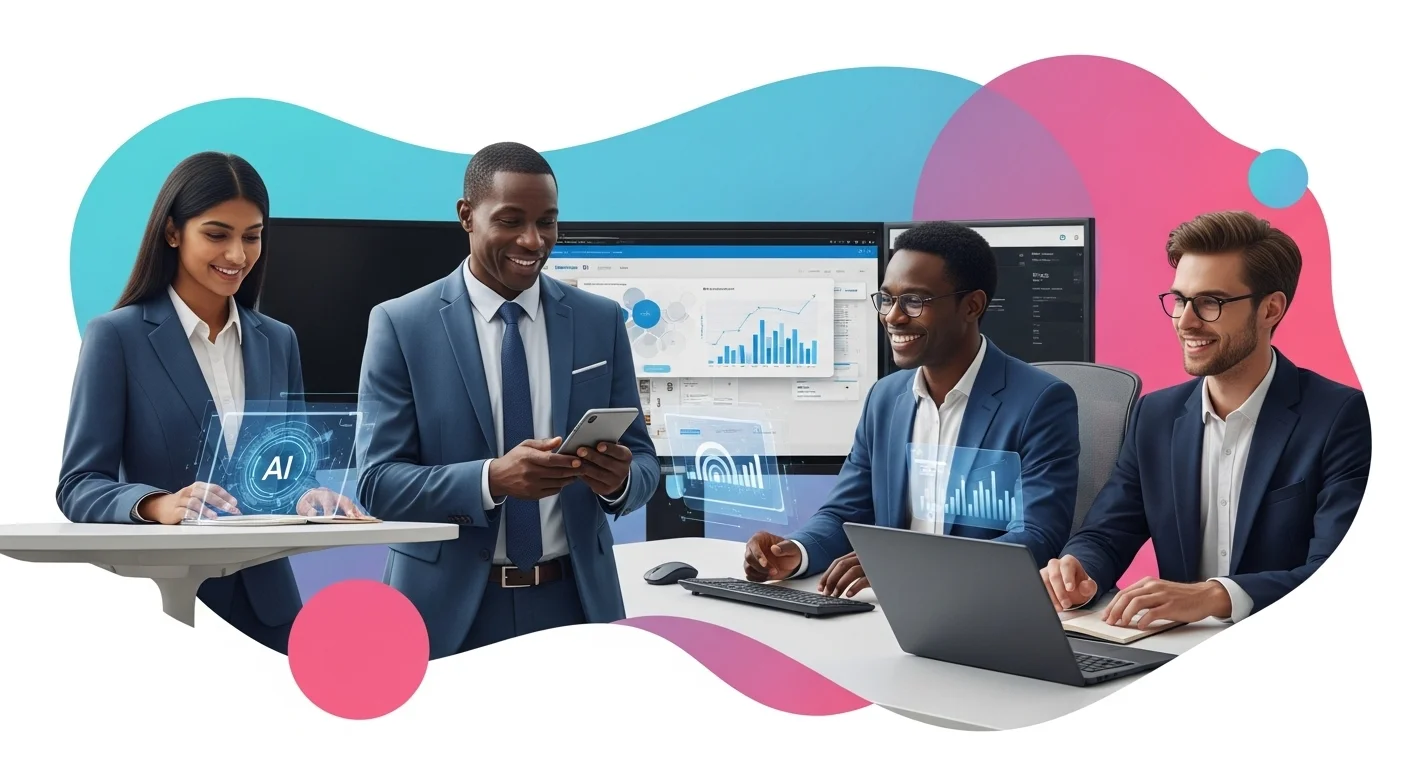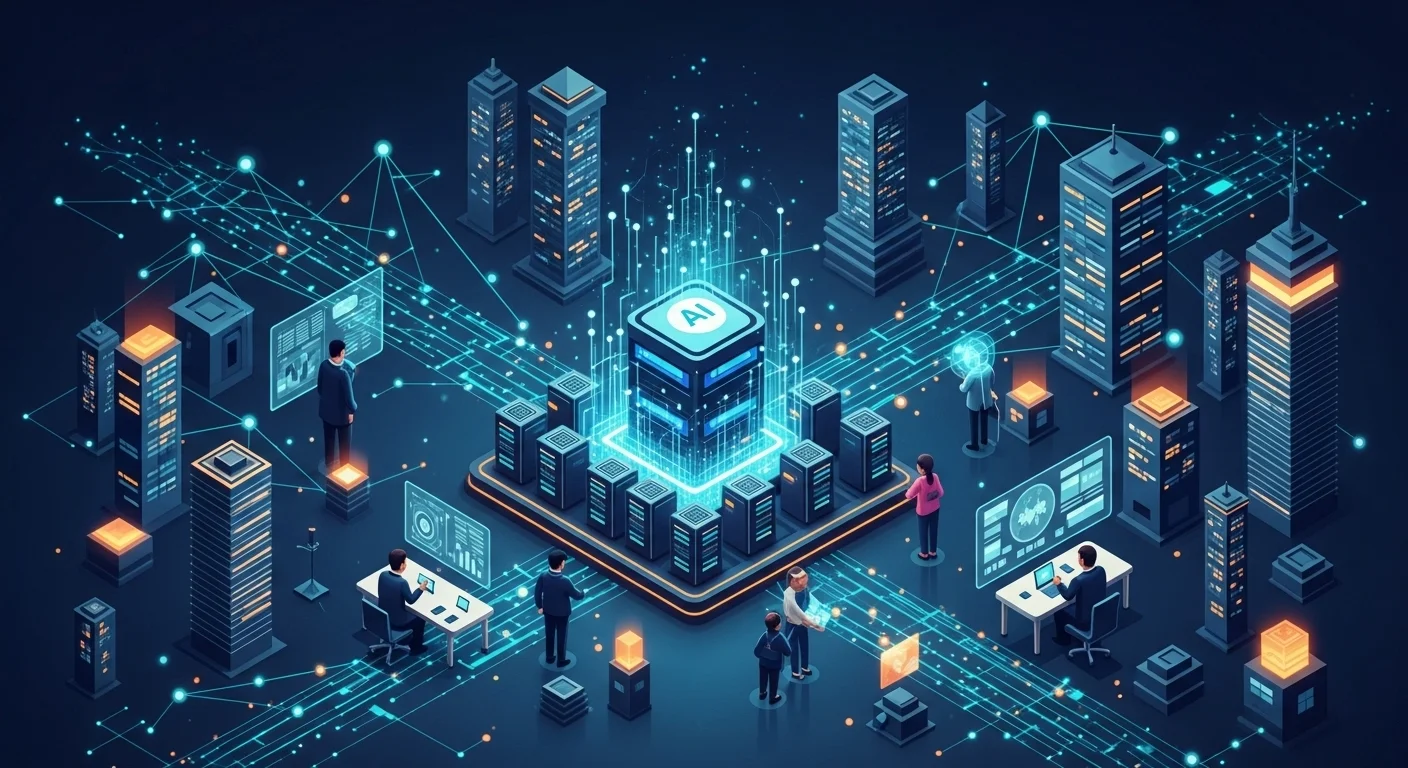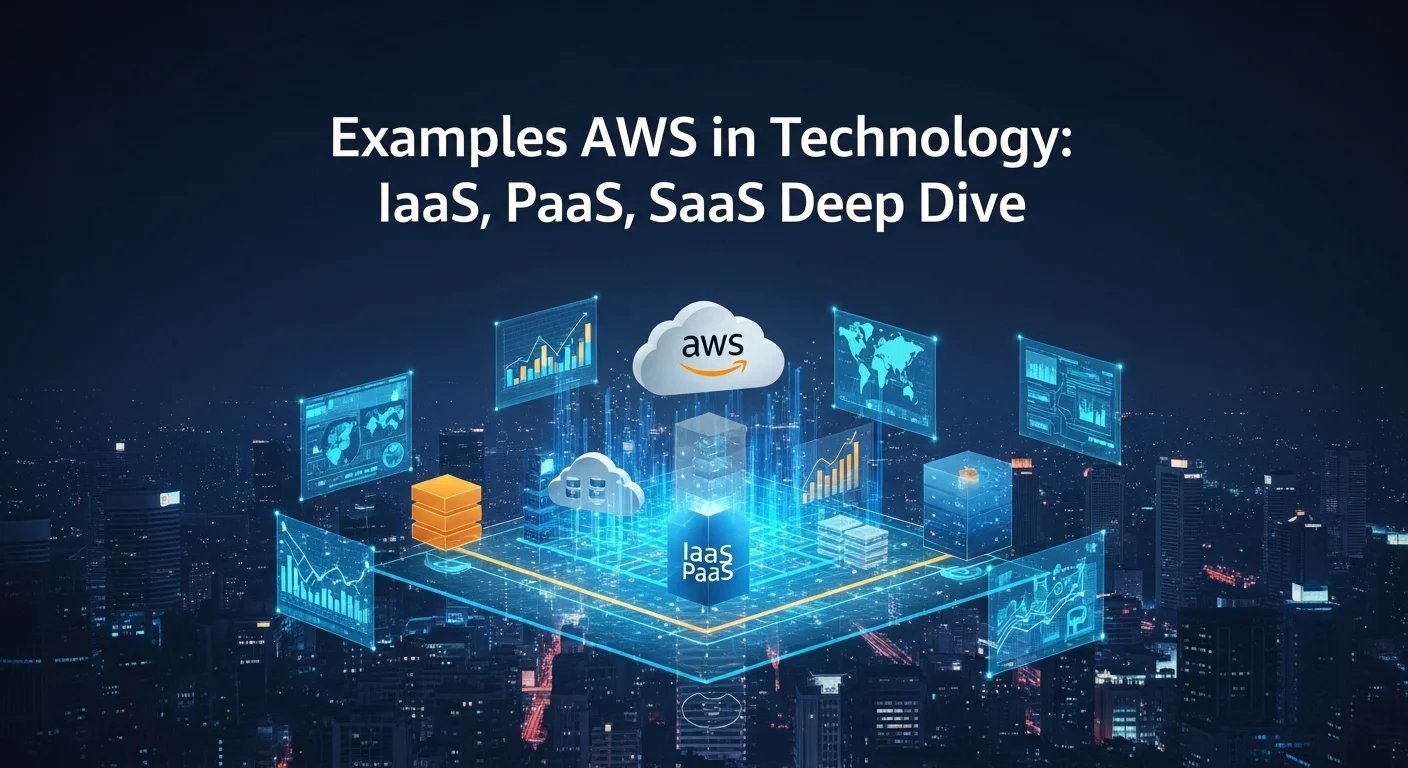Microsoft AI: Your Guide to Transforming Business with Real-World Solutions

Executive Summary
In my years helping businesses navigate the world of tech, no shift has been as monumental as the rise of Artificial Intelligence. And right at the center of it all is Microsoft. This article is your straightforward, no-nonsense guide to understanding Microsoft's AI ecosystem and its real-world impact. We'll cut through the jargon to explore the game-changing partnership with OpenAI and see how tools like Azure AI and Copilot are more than just buzzwords—they're practical assets for boosting productivity and sparking real growth. Think of this as a conversation where I share what I've learned about using these powerful tools, whether you're a tech leader planning your next move or a curious entrepreneur ready to leverage AI. We'll uncover how you can make Microsoft's AI work for you, making your business smarter, faster, and more innovative in a digital-first world.
Table of Contents
- What is Microsoft AI and Why Does It Matter to You?
- The OpenAI Partnership: A Game-Changing Collaboration
- The Core Pillars of Microsoft's AI Strategy
- How AI is Solving Real-World Business Problems
What is Microsoft AI and Why Does It Matter to You?
In today's fast-moving technology landscape, Artificial Intelligence (AI) isn't just a futuristic concept; it's a powerful tool that's actively reshaping our world. Leading this charge is Microsoft, which has brilliantly built a whole ecosystem of AI services designed to help everyone, from individuals to global corporations, do more. When I talk about Microsoft's AI, I'm not referring to a single product. I'm talking about a complete platform that's making AI more accessible and impactful than ever before. For anyone in business, understanding this ecosystem is no longer optional—it's the key to staying competitive and innovative.
At the very core of Microsoft's AI success story is its deep partnership with OpenAI, the minds behind groundbreaking models like GPT-4. I've seen firsthand how this collaboration has shaken up the industry. Microsoft poured massive resources into OpenAI, giving them the immense computing power needed to build these incredible AI brains. In return, Microsoft got to weave this cutting-edge technology directly into its own products. This created a perfect cycle: OpenAI pioneers new AI frontiers, and Microsoft provides the global stage (its Azure cloud) to bring these innovations to businesses everywhere. This is most visible in services like the Azure OpenAI Service, which lets companies use powerful AI models with all the security and reliability you'd expect from Microsoft.
The Core Pillars of Microsoft's AI Strategy
To really get a handle on Microsoft's AI, it helps to think of it in three main parts. The first is the foundation: Microsoft Azure. Azure AI is like a massive toolbox filled with building blocks for creating smart applications. It has everything from pre-built AI for understanding images and speech to a powerful platform, Azure Machine Learning, for crafting your own custom AI models from scratch. This makes Azure the solid ground on which almost all of Microsoft's business AI solutions are built.
The second part is where most of us see the magic happen: AI-powered tools like Microsoft 365 Copilot. I believe Copilot represents a fundamental change in how we work. It embeds a smart assistant directly into the apps we use every day—Word, Excel, PowerPoint, and Teams. It's not just about automating simple tasks; it’s about having a partner that can help you draft a proposal, analyze complex data, or summarize an hour-long meeting you missed. This is how AI becomes a tangible, everyday utility for every employee, boosting our own creativity and intelligence.
The third part is the thriving developer community. Microsoft has rolled out fantastic tools like GitHub Copilot (an AI assistant for programmers) and the Copilot Studio. This studio allows businesses to customize Copilot or even build their own specialized AI agents, connecting them to their unique data. By empowering developers, Microsoft ensures a constant flow of new and creative solutions built on its platform.
How AI is Solving Real-World Business Problems
The real beauty of Microsoft's AI is how it applies to tangible business challenges. In my work, I've seen it transform departments. Customer service teams build smart chatbots with Copilot Studio to offer 24/7 support. Marketing teams use AI to sift through customer data and create perfectly tailored campaigns. The advanced language skills from the OpenAI partnership enable incredibly sophisticated applications, from detecting fraud in financial transactions to helping doctors analyze medical scans.
This intelligence is also woven directly into Microsoft's core business software, Dynamics 365. Here, AI provides sales teams with insights on the most promising leads, gives service agents the context they need to solve problems faster, and helps optimize entire supply chains by predicting demand. It’s not a separate feature; it’s part of the operational fabric of the business.
Crucially, Microsoft has been a vocal champion for responsible AI. They've laid out clear principles like fairness, transparency, and accountability to guide their work. In an age where AI is becoming incredibly powerful, this focus on ethics is vital for building trust and ensuring this technology benefits us all. It's this blend of cutting-edge research, practical business application, and a strong ethical compass that makes Microsoft's AI journey so compelling.

Your Complete Guide to Microsoft's AI Solutions
Diving into Microsoft's AI offerings can feel like exploring a new city. There are many districts, each with its own character and purpose. This guide is your map. I'll walk you through the technical tools and business strategies you need to effectively use this technology, whether you're a business leader, an IT pro, or a developer ready to build something amazing.
A Technical Look at the Azure AI Platform
The heart of any serious AI initiative at a company using Microsoft tech is the Azure AI platform. It's not one thing, but a collection of services that work together. Let’s break down the main tools in the toolbox:
1. Azure OpenAI Service: This is the crown jewel, born from the partnership with OpenAI. It gives your business secure, enterprise-grade access to the most powerful AI models like GPT-4 and DALL-E. What I tell my clients is that using this service is like having a private, secure line to the world's most advanced AI, backed by Microsoft's reliability. It’s perfect for building apps that need to understand and generate human-like text or reason about complex problems.
2. Azure Machine Learning (AzureML): If you need to build a custom AI model tailored to your specific data, this is your workshop. AzureML supports the entire process, from preparing your data to training your model and deploying it for real-world use. It’s versatile, offering simple tools for beginners and powerful code-based options for seasoned data scientists.
3. Azure AI Cognitive Services: Think of these as pre-built AI 'brains' you can easily plug into your applications. It’s a shortcut to powerful features without needing a PhD in machine learning. They cover:
- Vision: Analyzing images, recognizing faces, and understanding video content.
- Speech: Converting spoken words to text, generating natural-sounding speech, and real-time translation.
- Language: Figuring out the sentiment of a text, extracting key topics, and building Q&A bots.
- Decision: Spotting anomalies in data or moderating content to keep your platform safe.
4. Azure AI Search: This service has become incredibly important. It lets you build a powerful search engine over your own private documents. Its real magic today is in a technique called Retrieval-Augmented Generation (RAG), which allows you to 'ground' a large language model like GPT-4 in your company's data. This prevents the AI from making things up and ensures its answers are accurate and relevant to your business.
5. Azure AI Studio: This is the unified workbench that brings all these tools together. It’s a collaborative space where your team can design, build, and manage AI applications from start to finish. It simplifies the entire process, from experimenting with prompts to monitoring the AI's performance and safety in production.
A Practical Roadmap for Implementing AI
Successfully adopting AI is as much about strategy as it is about technology. Here's a simple, step-by-step approach I've seen work time and time again.
Step 1: Find a Real Problem to Solve. Forget the hype. Ask yourself, 'What's our biggest headache right now, and could AI help?' Start with something concrete, like automating repetitive data entry, improving your customer service response time, or predicting which sales leads are most likely to close. A clear goal with a measurable return is the best starting point.
Step 2: Start Small, Learn Fast. Don't try to build a massive, all-encompassing AI system from day one. I always advise starting with a small pilot project. For example, build an internal chatbot to answer common HR questions. This gives you a low-risk way to learn, demonstrate value, and build momentum for bigger projects.
Step 3: Get Your Data in Order. An AI is only as smart as the data it learns from. This is a crucial step that many people underestimate. You need to ensure your data is clean, relevant, and organized. Microsoft offers tools like Microsoft Fabric to help unify your data, which is a lifesaver for getting it ready for AI.
Step 4: Pick the Right Tool for the Job. Based on your goal and your team's skills, choose the right service from the Azure AI toolbox. Need a quick solution for text analysis? A Cognitive Service API is perfect. Want to use GPT-4 on your private documents? Azure OpenAI Service is your answer. Need a fully custom predictive model? It's time for Azure Machine Learning.
Step 5: Weave It into Your Workflow. An AI model is useless if it's not used. The final step is to integrate it into your team's daily work. This could mean showing AI insights in a dashboard, adding a Copilot to Microsoft Teams, or connecting an AI agent to your sales software. Just as important is teaching your employees how to work with their new AI partner. Fostering a culture of curiosity is key to long-term success.

Real-World Tips for Using Microsoft AI in Your Business
Moving from theory to practice is where the real value of Microsoft's AI comes to life. It’s not just about having the tools; it's about knowing how to use them smartly. Here are some tips and strategies I've gathered from the field to help you get the most out of your technology experience and avoid common pitfalls.
Best Practices for a Successful AI Journey
Embarking on an AI initiative can be transformative, but it requires a solid plan. Following these best practices will set you up for success.
1. Connect AI Directly to Business Goals: This is my number one rule. Before you do anything else, be crystal clear about what business problem you're solving. Are you trying to cut costs, delight customers, or speed up innovation? Define how you'll measure success. An AI project is only truly successful if it improves a key business metric.
2. Make Responsible AI a Priority from Day One: Don't treat ethics as a checkbox. I've seen projects derail because trust was lost. Embrace Microsoft's Responsible AI framework from the start. Use tools like Azure AI Content Safety to prevent harmful outputs and check your custom models for bias. Being transparent and ethical is the only way to build lasting trust with your team and your customers.
3. Build an AI-Ready Culture: Technology is only half the battle. Your company culture needs to adapt. I always encourage leaders to talk about AI as a 'copilot'—a tool that helps humans, not replaces them. Encourage curiosity and learning. Create a safe space for people to experiment and discover new ways of working with AI. This mindset is what makes AI adoption stick.
4. Double Down on Security and Governance: When you connect powerful AI to your private data, you open up new security challenges. You must protect that information. Use Azure’s robust security features like private networks and managed identities. Create clear rules about who can access data and why. Tools like Microsoft Purview are essential for mapping out your data landscape before an AI ever sees it.
Getting the Most from Your Everyday Business Tools
Microsoft has packed incredible AI into the tools you already use. The trick is knowing how to unlock it.
Microsoft 365 Copilot: Your Creative Partner. Push your teams to think beyond simple commands. Here are a few things I suggest:
- In Word, don't just say 'write a marketing email.' Instead, provide an outline, specify a friendly and persuasive tone, and ask it to pull key facts from a recent report using the '/' reference command.
- In Excel, use it as your personal data analyst. Ask it to 'show me the top 3 sales trends from last quarter and visualize them in a bar chart.' It can even write Python code for you right in the sheet.
- In PowerPoint, you can turn a dense Word document into a clean, visually appealing presentation, complete with speaker notes, in minutes. It’s a huge time-saver.
- In Teams, this is a game-changer. Use Copilot to get a summary of a meeting you missed, complete with action items and key decisions. It makes keeping up with everything so much easier.
Power Platform AI Builder: AI for Everyone. You don't need to be a developer to build with AI. The AI Builder lets anyone add intelligence to their apps and workflows. I've seen people build tools to automatically process invoices, analyze customer feedback from a survey, or predict if a shipment will be delayed, all with a simple point-and-click interface.
Copilot Studio: Build Your Own AI Agent. When you need a more tailored chatbot, Copilot Studio is fantastic. A great starting strategy is to build an internal agent first—perhaps one that helps new hires with onboarding. It's a safe way to test and refine your agent before you have it interacting with customers.
Staying Ahead of the Curve
The world of AI is moving incredibly fast. Staying current is crucial. Here are the resources I personally follow:
Follow the Official Source: Keep an eye on the official Microsoft AI Blog and the Azure Blog. These are the best places for reliable news and updates. I also make sure to watch the keynotes from Microsoft's big events, like Build and Ignite, as they lay out the future roadmap.
Join the Conversation: The community is a goldmine of information. Participate in forums and follow Microsoft product managers and experts on platforms like LinkedIn. You'll learn from the real-world experiences of your peers.
Never Stop Learning: Encourage your team to use Microsoft Learn. It has a massive library of free courses and certifications on Azure AI and Power Platform. For the deepest technical knowledge, the official Microsoft AI documentation is the ultimate resource. It's my go-to for definitive guides and tutorials.
By embracing these strategies, you can make Microsoft's AI a core part of your business, driving innovation and preparing your organization for the future.
Expert Reviews & Testimonials
Sarah Johnson, Business Owner ⭐⭐⭐
The information about Microsoft Ai is correct but I think they could add more practical examples for business owners like us.
Mike Chen, IT Consultant ⭐⭐⭐⭐
Useful article about Microsoft Ai. It helped me better understand the topic, although some concepts could be explained more simply.
Emma Davis, Tech Expert ⭐⭐⭐⭐⭐
Excellent article! Very comprehensive on Microsoft Ai. It helped me a lot for my specialization and I understood everything perfectly.



